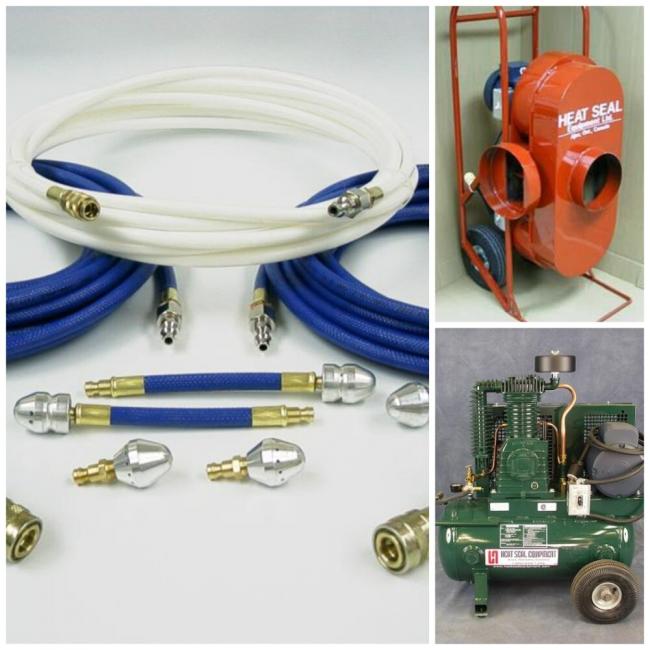A Beginner’s Guide To PSI & CFM In Duct Cleaning

For professional duct cleaners, learning and understanding everything about airflow is critical. The performance of almost every single tool, from skipper lines and vent snakes to skipper balls, is dependent on the supply of compressed air.
So, if you’re new to the industry and want to expand your knowledge of airflow, you must focus on getting a good grasp of two very important concepts - PSI and CFM. Knowing about these two is equal to unlocking the secret to peak performance as far as your air-powered tools are concerned.
In this blog, we will guide you through the definitions of each term, their role in equipment performance and how you can use PSI and CFM to get the airflow your machine needs for maximum cleaning efficiency.
What Is PSI?
If you are wondering about the full form, it is Pounds per Square Inch. Simply put, it’s a unit of measurement, specifically of air pressure. With PSI, you can know exactly how forcefully the air is being pushed out of your duct cleaning air compressor. This, in turn, is helpful in determining the efficacy of your machine and your efforts.
Think of PSI as the power you need to ensure optimal cleaning. If you turn up the PSI on your compressor, it will be forced to blow stronger blasts of air into the duct. The converse will happen if you turn the PSI down.
Now, using higher PSI is recommended if the duct system you’re cleaning contains large amounts of compacted debris and stubborn dirt. The powerful action of compressed air is instrumental in breaking down and dislodging hardened buildup.
If you want to make the most of your air-powered duct cleaning tools, you should use them at a PSI of 90 to 120. You can adjust the exact requirement based on the machine model you have, along with the cleaning action your job demands.
What Is CFM?
Cubic Feet per Minute. Now that you know the full form of CFM, let’s focus on what it means and how it can help in duct cleaning. In simple terms, it measures the volume of air your compressor can deliver when in use.
So if PSI is about pressure, CFM concerns itself only with capacity. Its primary job is to tell you in exact terms how much air your particular compressor can sustain during the course of a job. While that may not sound like a lot, if your machine doesn’t have enough CFM, all your high-pressure tools will be effectively rendered powerless. That is to say, they might start strong, but they’re likely to fizzle out quickly, thus leading to reduced efficiency and delays on the job.
As for the ideal range of CFM, it depends on the tools you’re using. For example, when using skipper balls and air whips, you should set the CFM between 10 and 20 at 100 PSI to ensure efficiency. Commercial or large-scale set-ups may demand a higher CFM range with the PSI adjusted accordingly.
Why Both PSI & CFM Are Important
As you know, both CFM and PSI are like two peas in a pod. It might be tempting to focus on one over the other, but any duct cleaning job is most effective when it harnesses the power of both. Here’s why:
- High PSI, Low CFM Scenario: In this case, the initial air blast will be very strong, no doubt, but the airflow will drop soon after, thus delivering unreliable performance.
- High CFM, Low PSI Scenario: Though you don’t have to worry about airflow in this scenario, the pressure will be significantly low, thus making it difficult to remove debris or push it out of the vent.
The key is to strike the right balance between CFM and PSI so adequate pressure and sustained airflow can work together to guarantee a super clean duct.
Conclusion
Ensuring your air duct cleaning compressor matches the CFM and PSI requirements of primary duct cleaning tools is essential. So is ensuring your compressor can maintain the required PSI at its listed CFM. If you don’t know where to find one, you can turn to Heat Seal Equipment Ltd. Our wide range of compressors comes with varying airflow capacities to serve all kinds of duct cleaning jobs. Contact us to get tailor-made air-powered machines, tools, and accessories that help you clean faster and safer.





